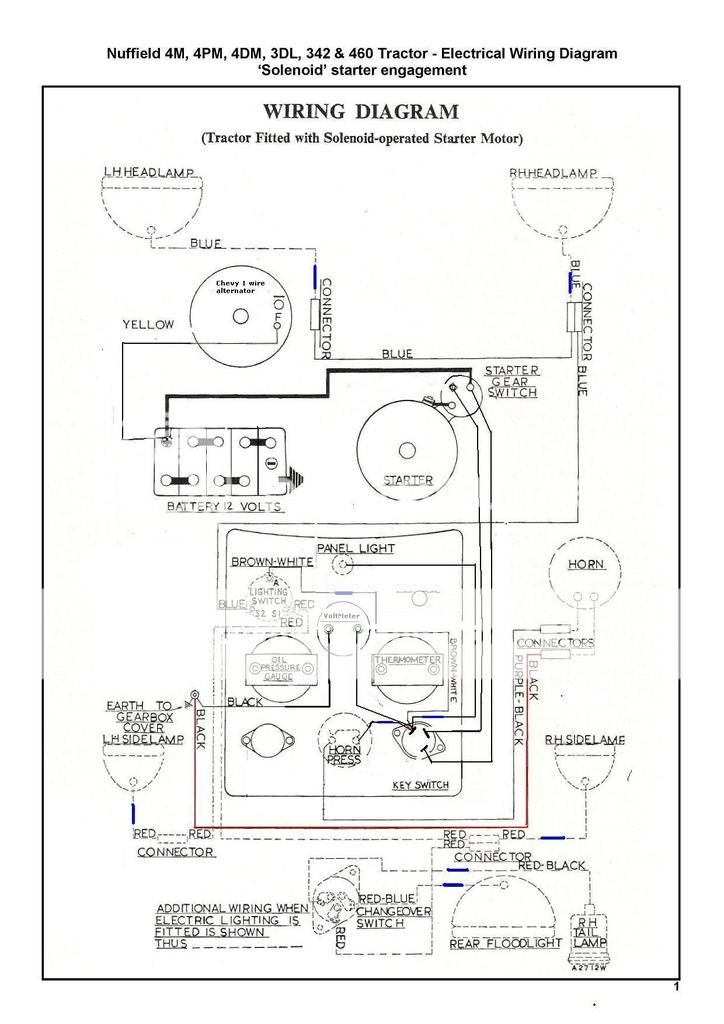Could someone more experienced then I look at this wiring diagram and tell me if they can spot any problems with it? Im fairly new when it comes to wiring and dont feel like lighting the ol girl up one day cause of inexperience.
Blue dashes are line fuses
the red wire is one im not too sure about as it was connected to the old control box before the gearbox ground
Im hoping to install a voltmeter instead of an ammeter
alternators a delco remy 1 wire alternator
tractors a Nuffield Universal 3
Ive also been advised to install a kill switch near the battery terminal, but considering the whole thing is turned on via an ignition key switch, would I need to?
thanks

Blue dashes are line fuses
the red wire is one im not too sure about as it was connected to the old control box before the gearbox ground
Im hoping to install a voltmeter instead of an ammeter
alternators a delco remy 1 wire alternator
tractors a Nuffield Universal 3
Ive also been advised to install a kill switch near the battery terminal, but considering the whole thing is turned on via an ignition key switch, would I need to?
thanks



